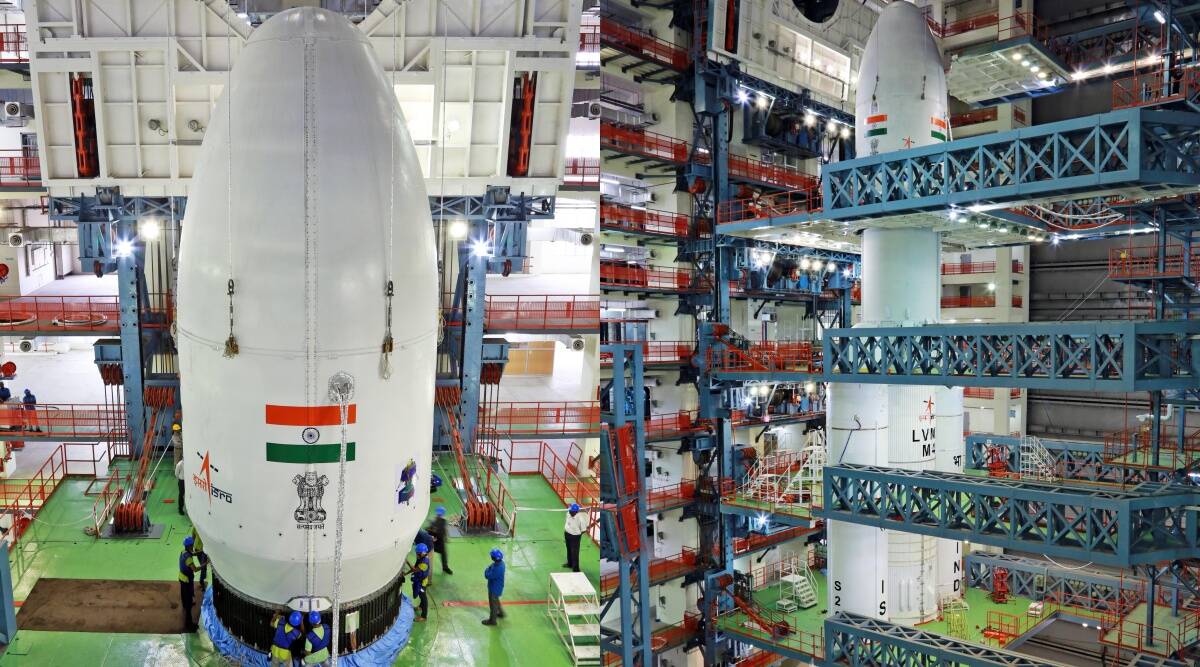Indian Space Research Organization, ISRO plan to launch the Chandrayaan-3 spacecraft to the Moon in mid of July month. It is integrated with LVM3, Launch Vehicle mark- III. On 5 July, it has tweeted by ISRO that the encapsulated assembly consists of the Chandrayaan-3 with the integration of LVM3 at the satish dhawan space centre.
The date of launch has been announced by ISRO. Chandrayaan-3 window launch runs from 12 July to 19 July. The space company chose the launch date as earliest as possible, said Chairman S. Somanath of ISRO.
Overview of ISRO Moon mission
The third moon mission of ISRO, chandrayaan-3, is a follow-up to Chandrayaan-2. It set the goal to demonstrate the full ability to safely land and rove on the lunar surface. The aim of the indigenous lander module, propulsion module and rover constitute the Chandrayaan-3 together, so it develops new techniques for planned missions.
According to the ISRO, the Lander has the ability to soft-land at specific locations and installed the rover that carries the in situ chemical analysis of the lunar surface in its mobility. The rover and Lander have the payloads to surface experiments.
Aim of Chandrayaan 3 mission
Chandrayaan-3 follows to Chandrayaan-2 mission, and its same aim is to demonstrate the ability to soft landing on the Moon. It delivers the Lander and rover to the lunar surface.
The Chandrayaan-2 mission ended on September 6, 2019, because mission Vikram lander failed to make a soft landing. The 13 minutes failure happened after the spacecraft started its descent. Only three countries are able to manage the land on Moon, the united states.
Insights of ISRO moon mission
- The main aim of PM is to keep the LM separate from PM and carry the techniques for launch injection to a lunar 100 km circular orbit.
- Additionally, the Propulsion Module has a single scientific payload that is used after the Lander Module, separate from the value-added component.
- In mid-July, the post-launch of the moon mission will be taken into account. Chandrayaan-2 results into occurring of orbital raising.
- The orbiter and Lander circle the Moon prior to landing the Moon. Mr Somanath stated that ISRO had strengthened the Lander in addition to brand-new equipment and fuel.
- Chandrayaan-3 will go in the same way as the predecessor and will like be land at the same site.
LVM-3 Chandrayaan-3’s
Launch Vehicle Mark-III, LVM-3 is referred to as the three-stage left medium launch vehicle developed by ISRO and called the GSLV Mark III. It is considered the most powerful rocket in space that is stable and used for the Chandrayaan-3 mission launch.
The vehicle is around 43.5 metres tall and has a 4-metre diameter. It has to lift off a mass of around 640 tonnes. It is able to carry 8000 kgs to low earth orbit. It is also able to carry the 4,000 kilograms payload of the geostationary transfer orbit.
Conclusion
The upper stage of this launch mission is powered by CE-20, as per ISRO. It uses the boosters of two S200 solid rockets in order to give the thrust. The stage is powered by two L110 liquid-stage rockets.






